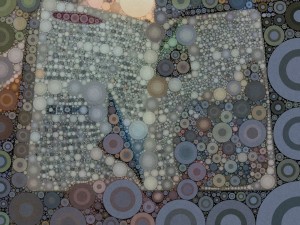
 We’ve got the details finally nailed down a bit better on this project and so I am posting an official announcement.
We’ve got the details finally nailed down a bit better on this project and so I am posting an official announcement.
I am very delighted to say that Jennifer Brozek is co-editing. Jenn’s put together a couple of dozen anthologies and I am ecstatic to have her organizational skills, keen editing eye, and sharp publicity skills on the project. I am very grateful that she’s signed on, because I looked at the amount of work already piled on my plate for the coming year and was panicking. This project is happening because she’s agreed to do it.
In the convulsions, I am afraid I have shortchanged the slushreaders. I throttled back on soliciting submissions during the month they were open and didn’t conduct the training sessions that I meant to do. What I would like to do, if you are on the list for that (and I’m going to send out an e-mail about this as well) is give you folks a Zoom session where we get to talk about slushreading in a way that may be useful and also keep you on a list for my next project.
Everything else remains the same except that solicited stories have a bit more time in their deadlines! If you submitted a story, it is still under consideration. Some of the solicited stories have been arriving and we’re both excited about the project coming out mid-way through 2021 from Arc Manor.
...
I blogged a couple of days ago about arranging stories and my philosophy for such arrangements. I wanted to show those principles in action by looking at the two ToCs for the book Near + Far.
As you may know, the book is divided into two parts, near future stories and far future stories. This allowed us to take advantage of the old Ace double format, where each half is one side of the book. It also meant creating two tables of contents, one for each section.
So here’s the order for the Near section, with some explication:
The collection leads off with the story, “The Mermaids Singing, Each to Each”. The story originally appeared in Clarkesworld, and is one of my favorites, as well as garnering significant critical attention. It’s a story that I knew would be familiar to many of my fans, and perhaps remind them of what they liked about my work, setting them in the proper mood for the rest of the stories. For readers who were new to the work, I knew that this was a good strong start.
The second story is, “Peaches of Immortality,” which originally appeared in Lightspeed Magazine as “The Immortality Game.” This is another strong story although it deals with a different theme than Mermaids. Like the first story, it has a somewhat ambiguous (but in this case arguably happy) ending.
“Close Your Eyes,” which originally appeared in Apex Magazine, marks a movement into more slipstreamy stuff and a venture into more experimental realms. It is a slightly odd story in that it toys a little with meta-fiction, talking about narrative conventions, and even ends with two possible endings, inviting the reader to pick the one they prefer. This seemed like a reasonable choice for a third story, in that it let me nudge the reader a little out of their presumed comfort zone.
“Therapy Buddha,” which appeared in a collection called 2020 Visions, ontinues to present some variety in terms of theme. If I had to sum them up so far, Mermaids is about hope and love, Peaches is about the perils of dwelling in the past, Close Your Eyes is about dependency, and this story is about loneliness and the relationships with the inanimate created by such circumstances. Notice that so far there is not a lot of variety in terms of length. While the other side has several flash pieces, this side only has one.
“Ms. Liberty gets a Haircut” is a change in emotion. It’s a story that, although it has a serious subject, also deals a lot with wordplay and pop-culture references, and is generally a lot of fun for readers. I felt that by now the readers probably had enough misery and ambiguity, and perhaps might like a little play.
“10 New Metaphors for Cyberspace,” a flash piece, marks what is close to the middle of the book. It is a prose poem of sorts, and so seemed a good accompaniment for Ms. Liberty, as well as also being somewhat experimental.
“Memories of Moments, Bright as Falling Dtars,” moves us back into more straightforward narratives and also away from the comic moments that its two predecessors held.
“Real Fur” is one of my earlier stories, but one that I like very much, and which has turned out to be a favorite with a number of readers, I suspect for its tactile qualities. It’s the first of the trio of what I consider the slightest stories of this section, followed by “Not Waving, but Drowning,” and “Vocobox,” which was one of the very first stories that I published.
After that I hit the last two stories in the book, and wanted to finish with fairly strong ones. I chose for the next-to-last story, the story “Long Enough and Just So Long,” which originally appeared in lightspeed and which is, I think one of my best. Or at least one of my favorites.
The final story, “Legends of the Gone,” is not the best in the collection or even close, but it is one that creates an impression that I wanted the reader to close with, a story about endings and goodbyes. It seemed like a very good choice for the final story of this section, particularly knowing that most readers would turn the book over and begin the Far section at that point.
Questions? Comments? What might you have done differently?
...
 The always fabulous Jude Marie Green mailed me. Her question, which got me thinking, was: What does an editor do (besides acquire) to make the issue “come together”?
The always fabulous Jude Marie Green mailed me. Her question, which got me thinking, was: What does an editor do (besides acquire) to make the issue “come together”?
It wasn’t the first time this question’s come up, and I’ve never seen much about it, so I wanted to talk a little about the idea of arranging things. Because an ideal magazine issue or anthology isn’t just a bunch of stories in a box. In theory, at least, the editor has selected stories that resonate with each other and arranged them in a way that’s meaningful. The whole is greater than the sum of the parts.
Here’s the only practical thing I’ve ever heard on the subject: Lead with your strongest story, and end with your second strongest. That seems like good advice to me, because a) first impressions flavor the way they’ll read what follows and b) at the end, you want the reader left feeling satisfied (or intrigued or delighted, but hopefully a favorable adjective, rather than let-down, disappointed, or relieved that the book is over.)
Beyond that – and this is entirely my philosophy and there are no guarantees any other editor feels the same – you want the stories to speak to each other. I’ve mentioned in another post that I used what was then a forthcoming collection, Near + Far, as an exercise for my online editing class. I gave the students the stories and told them to figure out an order and then be prepared to explain why they picked that order. Since there were actually two sections of the book, they actually did two ToCs, one for the “Near” part, which contained only near-future SF, and one for the “Far” part, which was devoted to SF farther out in time. It was enlightening (and sometimes entertaining) and I used that feedback when determining the actual order.
So here’s what I think about when arranging stories:
Some of these seem contradictory? Yup. Putting something like this together is a balancing act, and answers to what should go where are often dependent on what’s already been decided. Next time, I’ll go through the final versions of the ToCs for Near + Far and talk about why they’re in the order they are. Hopefully, that will show some of this in action.
Enjoy this insight into editing and want more content like it? Check out the classes Cat gives via the Rambo Academy for Wayward Writers, which offers both on-demand and live online writing classes for fantasy and science fiction writers from Cat and other authors, including Ann Leckie, Seanan McGuire, Fran Wilde and other talents! All classes include three free slots.
Prefer to opt for weekly interaction, advice, opportunities to ask questions, and access to the Chez Rambo Discord community and critique group? Check out Cat’s Patreon. Or sample her writing here.
...
Want access to a lively community of writers and readers, free writing classes, co-working sessions, special speakers, weekly writing games, random pictures and MORE for as little as $2? Check out Cat’s Patreon campaign.

"(On the writing F&SF workshop) Wanted to crow and say thanks: the first story I wrote after taking your class was my very first sale. Coincidence? nah….thanks so much."

(science fiction, short story) I run a courier ship between Earth, Luna, the space stations, Mars, and the Inner Gate. You need as little mass as possible to run a snipship, and due to what that doctor called my defects, I’m one of the smallest, fastest. Good pay, and most of the time I’m low-g, which is easiest on me.


This site is protected by reCAPTCHA and the Google Privacy Policy and Terms of Service apply. This site is a participant in the Amazon Services LLC Associates Program, an affiliate advertising program designed to provide a means for sites to earn advertising fees by advertising and linking to Amazon.com.